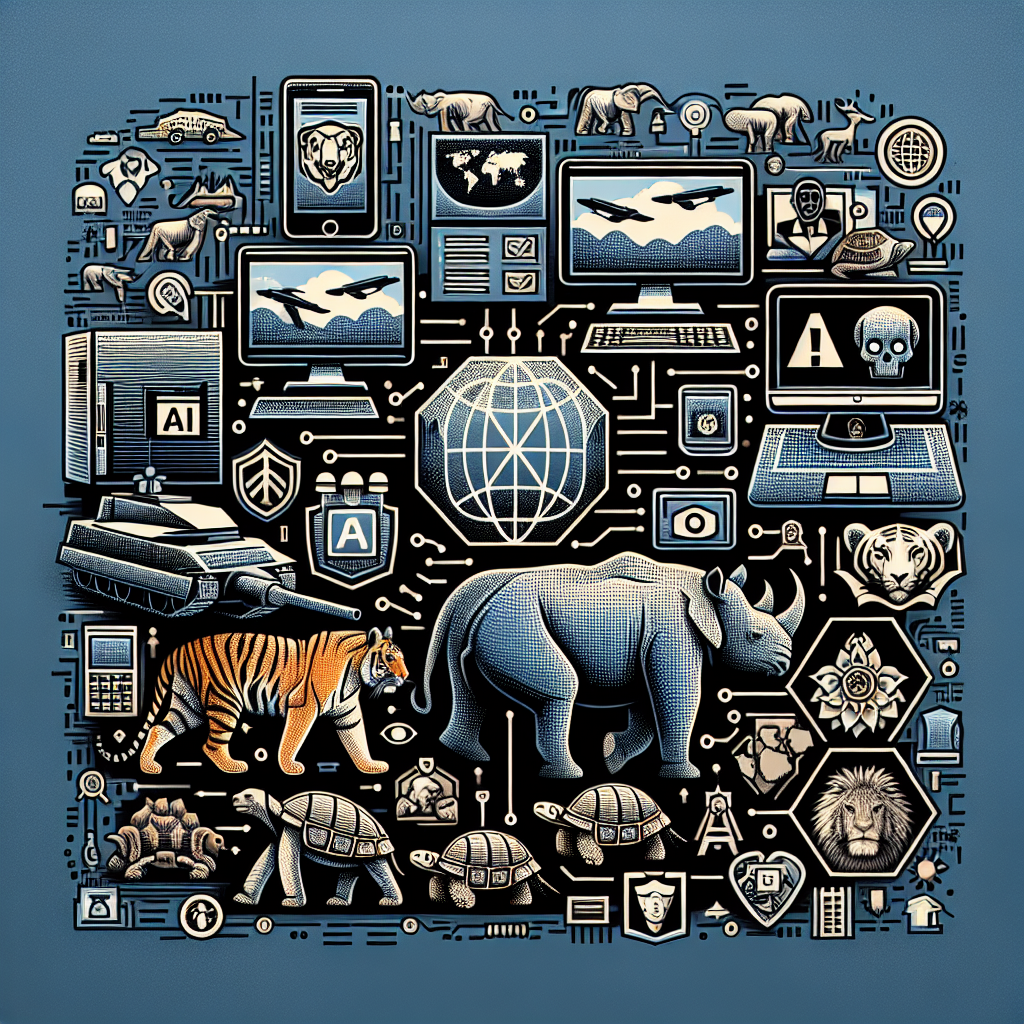Using AI to Combat Illegal Wildlife Trafficking
Illegal wildlife trafficking is a multi-billion-dollar industry that poses a significant threat to biodiversity around the world. From elephants and rhinos to pangolins and tigers, countless species are targeted by poachers and traffickers for their valuable parts and products. To combat this illegal trade, conservationists and law enforcement agencies are turning to artificial intelligence (AI) for innovative solutions.
AI technology has the potential to revolutionize the way we approach wildlife trafficking by improving detection, monitoring, and enforcement efforts. By leveraging AI tools such as machine learning, computer vision, and predictive analytics, researchers and conservationists can better identify trafficking hotspots, track the movement of illegal wildlife products, and disrupt criminal networks involved in the trade.
One of the key advantages of using AI in the fight against wildlife trafficking is its ability to process and analyze vast amounts of data quickly and efficiently. For example, AI algorithms can sift through massive datasets of satellite imagery, social media posts, and online marketplaces to identify patterns and trends associated with illegal wildlife trade. This information can then be used to target enforcement efforts in areas where poaching and trafficking are most prevalent.
In addition to monitoring and detection, AI can also help authorities predict and prevent future incidents of wildlife trafficking. By analyzing historical data on poaching activities, environmental conditions, and market trends, AI algorithms can generate insights that inform proactive conservation strategies. For example, AI-powered predictive models can forecast where poaching incidents are likely to occur next, allowing law enforcement agencies to deploy resources in advance to deter illegal activities.
Furthermore, AI technology can enhance collaboration and information sharing among conservation organizations, government agencies, and law enforcement authorities. By creating a centralized platform for sharing data and intelligence, AI can facilitate real-time communication and coordination between stakeholders involved in the fight against wildlife trafficking. This collaborative approach can help streamline efforts to combat illegal wildlife trade and improve the overall effectiveness of conservation initiatives.
Despite the promising potential of AI in combating wildlife trafficking, there are also challenges and limitations to consider. For example, the use of AI technology in wildlife conservation raises ethical concerns related to privacy, data security, and bias in algorithmic decision-making. It is crucial for researchers and practitioners to address these ethical issues and ensure that AI tools are used responsibly and transparently in the fight against wildlife trafficking.
Another challenge is the need for adequate training and capacity building to effectively deploy AI solutions in the field. Conservationists and law enforcement agencies may require specialized skills and expertise to develop and implement AI-powered systems for wildlife monitoring and enforcement. Investing in training programs and partnerships with technology providers can help build the capacity of conservation organizations to leverage AI in their anti-trafficking efforts.
Despite these challenges, the potential benefits of using AI to combat wildlife trafficking are substantial. By harnessing the power of AI technology, we can enhance our ability to protect endangered species, preserve biodiversity, and disrupt the illegal wildlife trade. Through strategic partnerships, innovative research, and responsible use of AI tools, we can make meaningful progress in the fight against wildlife trafficking and safeguard our natural heritage for future generations.
FAQs
Q: How does AI technology help in detecting and monitoring illegal wildlife trafficking?
A: AI technology such as machine learning and computer vision can analyze vast amounts of data from sources such as satellite imagery, social media, and online marketplaces to identify patterns and trends associated with wildlife trafficking. This information can be used to target enforcement efforts and track the movement of illegal wildlife products.
Q: What are some examples of AI tools being used to combat wildlife trafficking?
A: Examples of AI tools used in the fight against wildlife trafficking include predictive analytics models that forecast poaching hotspots, computer vision algorithms that identify illegal wildlife products in images and videos, and natural language processing systems that analyze online communications for signs of illegal trade.
Q: What are the ethical considerations related to using AI in wildlife conservation?
A: Ethical considerations related to AI in wildlife conservation include privacy concerns related to data collection and sharing, security risks associated with storing sensitive information, and bias in algorithmic decision-making. It is essential for researchers and practitioners to address these ethical issues and ensure that AI tools are used responsibly and transparently.
Q: How can conservation organizations and law enforcement agencies build capacity to use AI in anti-trafficking efforts?
A: Conservation organizations and law enforcement agencies can build capacity to use AI technology by investing in training programs, partnerships with technology providers, and cross-sector collaborations. By developing specialized skills and expertise in AI, stakeholders can effectively deploy AI solutions to combat wildlife trafficking and protect endangered species.

